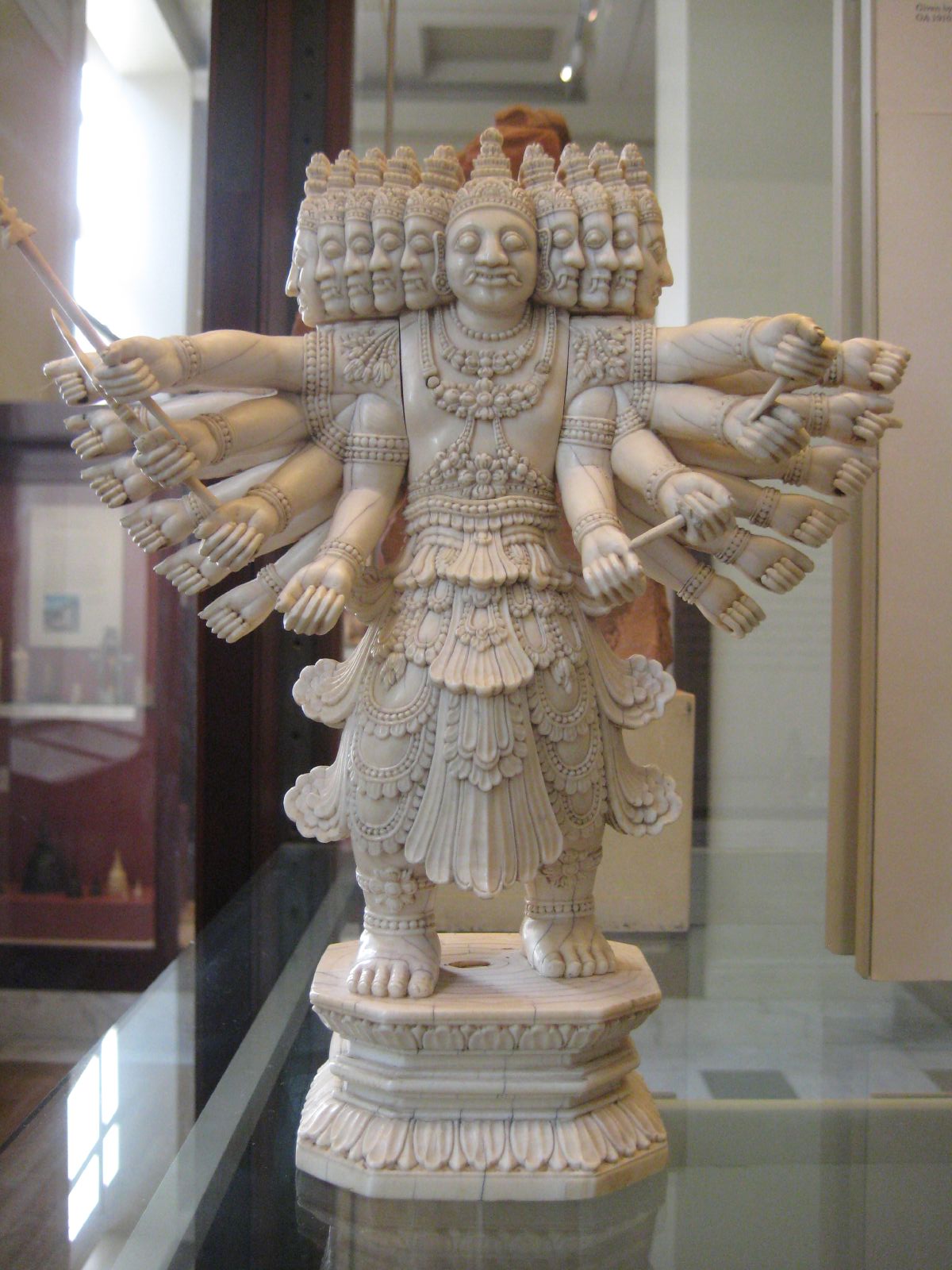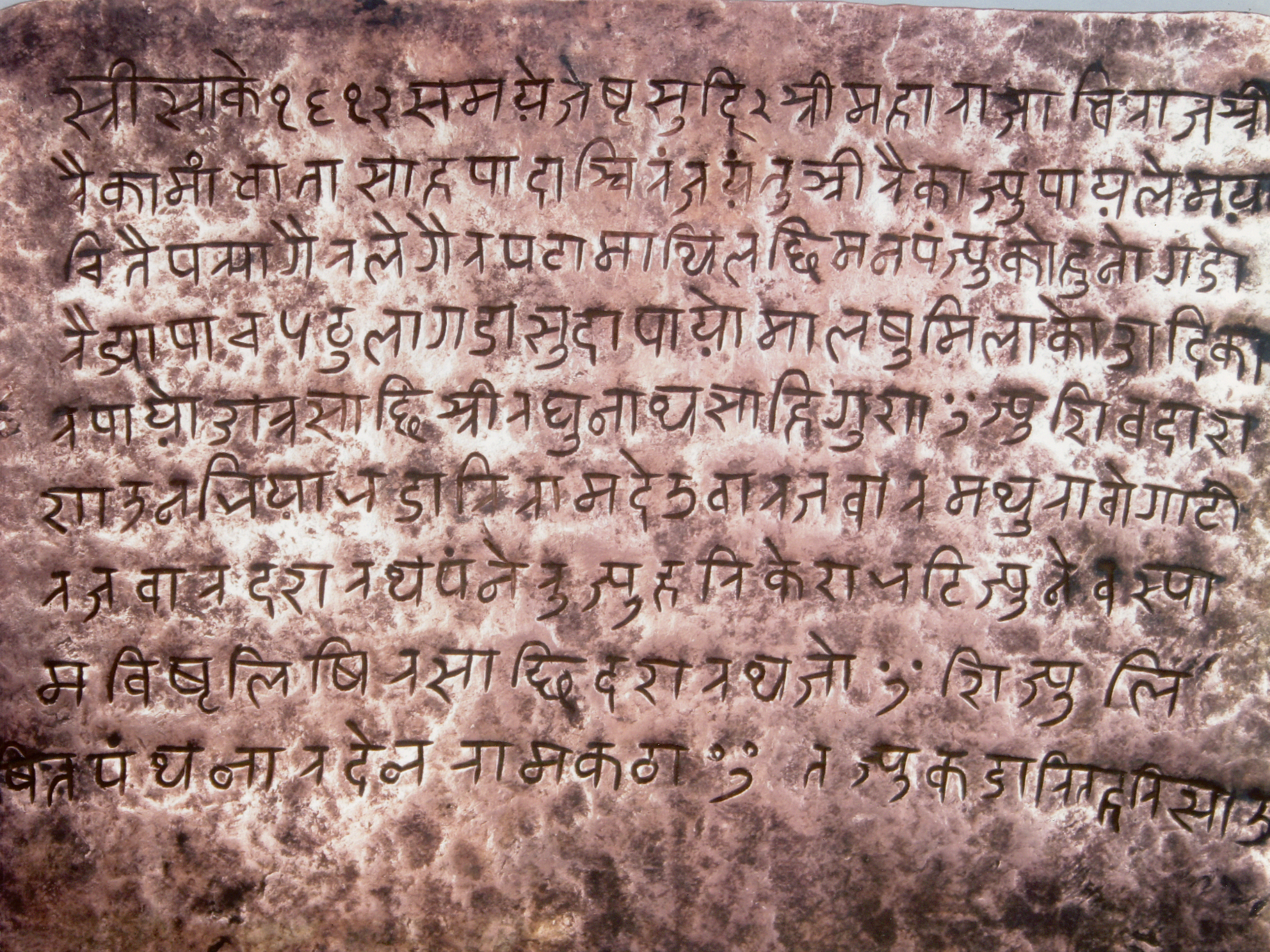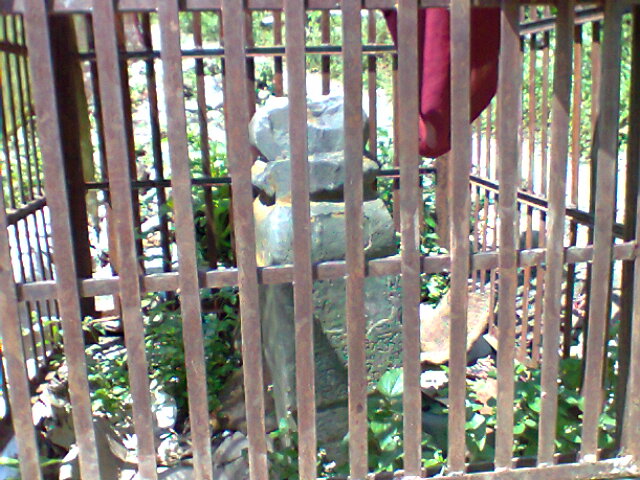|
Bir Charitra
''Bir Charitra'' () is a Nepali fantasy novel written by Girish Ballabh Joshi. The first part of the novel was written in (1956 BS) and was published in 1903 by Pashupat Press but soon the Rana government restricted the publication of other volumes. The complete all four parts of the novel was published only in 1965 (2022 BS) by Jagadamba Press. It is considered to be the first novel of Nepali literature. Background Girish Ballav Joshi worked as a Kabiraj (Ayurvedic practitioner) in Rana palace. He was hugely influenced by the Hindi writer Devaki Nandan Khatri. Joshi even named his son ad Devaki Nath after Khatri. Khatri was one of the earliest Hindi novelist and was widely popular for his fantasy novel ''Chandrakanta''. Joshi being influenced by Khatri wrote the novel of the similar genre. Even though only the first part of the novel was published in 1903, the novel became highly popular. The first part of the novel was published by Nara Dev Motikrishna Pashupat Press. ... [...More Info...] [...Related Items...] OR: [Wikipedia] [Google] [Baidu] |
Girish Ballabh Joshi
Yadunath Sharma, popularly known as Girish Ballabh Joshi (1867–1923) was a Nepali Ayurvedic doctor ( ''kabiraj'') and novelist. He is considered to be the first Nepali novelist. His novel ''Bir Charitra'' was first published in 1903. Early life He was born on 5 October 1867 (19 Ashoj 1924 BS) to father Ganga Nath and mother Bagishowri. The place of his birth is disputed, some sources claim it was in Kathmandu, while other claims, it was in Varanasi or Mathura city of India. It is believed his parents were on a pilgrimage in India, around his birth. He grew up in Mathura and Varanasi. His family served as the royal ''Baidhya'' (Ayurvedic practitioner). He studied Ayurveda in Varanasi. After the death of his father, he returned to Kathmandu.https://elibrary.tucl.edu.np/bitstream/123456789/7936/2/Chapter%20Page%281%29.pdf Literary career Although, he had not received any education in literar field, he was interested in literature. He was proficient in Hindi and Urdu along ... [...More Info...] [...Related Items...] OR: [Wikipedia] [Google] [Baidu] |
Rakshasa
Rakshasas ( sa, राक्षस, IAST: : Pali: ''rakkhaso'') lit. 'preservers' are a race of usually malevolent demigods prominently featured in Hindu mythology. According to the Brahmanda Purana, the rakshasas were created by Brahma when he assumed a body of ''tamas'' (darkness), the beings springing forth and promising to protect the waters of creation. They are often depicted to be man-eaters (''nri-chakshas'', ''kravyads''), acting as embodiments of the powers of evil in the Vedic scriptures. They are offered a distinction from yakshas, their cousins who are depicted to be forces of destruction. The term is also used to describe asuras, a class of power-seeking beings that oppose the benevolent devas. They are often depicted as antagonists in Hindu scriptures, as well as in Buddhism and Jainism. The female form of rakshasa is rakshasi. Hinduism In Vedas The Hymn 87 of the tenth mandala of the '' Rigveda'' mentions about Rakshasas. They are classified amongs ... [...More Info...] [...Related Items...] OR: [Wikipedia] [Google] [Baidu] |
Nepali-language Novels
Nepali (; , ) is an Indo-Aryan language native to the Himalayas region of South Asia. It is the official, and most widely spoken, language of Nepal, where it also serves as a ''lingua franca''. Nepali has official status in the Indian state of Sikkim and in the Gorkhaland Territorial Administration of West Bengal. It is spoken by about a quarter of Bhutan's population. Nepali also has a significant number of speakers in the states of Arunachal Pradesh, Assam, Himachal Pradesh, Manipur, Meghalaya, Mizoram and Uttarakhand. In Myanmar it is spoken by the Burmese Gurkhas. The Nepali diaspora in the Middle East, Brunei, Australia and worldwide also use the language. Nepali is spoken by approximately 16 million native speakers and another 9 million as a second language. Nepali is commonly classified within the Eastern Pahari group of the Northern zone of Indo-Aryan. The language originated from the Sinja Valley, Karnali Province then the capital city of the Khasa Kingdom ... [...More Info...] [...Related Items...] OR: [Wikipedia] [Google] [Baidu] |
1965 Nepalese Novels
Events January–February * January 14 – The Prime Minister of Northern Ireland and the Taoiseach of the Republic of Ireland meet for the first time in 43 years. * January 20 ** Lyndon B. Johnson is Second inauguration of Lyndon B. Johnson, sworn in for a full term as President of the United States. ** Indonesian President Sukarno announces the withdrawal of the Indonesian government from the United Nations. * January 30 – The Death and state funeral of Winston Churchill, state funeral of Sir Winston Churchill takes place in London with the largest assembly of dignitaries in the world until the 2005 funeral of Pope John Paul II. * February 4 – Trofim Lysenko is removed from his post as director of the Institute of Genetics at the Russian Academy of Sciences, Academy of Sciences in the Soviet Union. Lysenkoism, Lysenkoist theories are now treated as pseudoscience. * February 12 ** The African and Malagasy Republic, Malagasy Common Organization ('; OCA ... [...More Info...] [...Related Items...] OR: [Wikipedia] [Google] [Baidu] |
Madhabi
''Madhabi'' () is a 1983 Nepali mythological novel by Madan Mani Dixit. It was published on 13 April 1983 by Sajha Prakashan, and won the Madan Puraskar (2039 BS) for the same year. It is a retelling of the story of Madhabi and Gallav from Mahabharata. Written in a grandiose setting, the novel depicts the economic, social and political conditions of Vedic Indian society three thousand years ago. The original story is told in Mahabharat to Duryodhana to teach him about the result of stubbornness and how it can destroy life. The book illustrates the evils of ancient Indian society, such as slavery and patriarchy, and the helplessness of a woman in a patriarchal society and her exploitation by men. Madhavi is used by multiple men throughout the book, but is neglected towards the end. The novel is considered a classic in Nepali literature. Background Madan Mani Dixit, a journalist by trade, wrote the novel during the Panchayat rule in Nepal at a time when censorship was prevalen ... [...More Info...] [...Related Items...] OR: [Wikipedia] [Google] [Baidu] |
Bhanubhakta Ramayana
''Bhanubhakta Ramayana'' (), commonly known as ''Ramayan'', is the Nepali translation of Valmiki Ramayana by ''Adikavi'' Bhanubhakta Acharya. It was posthumously published in its complete form in 1887. It is widely considered to be the first Nepali epic. The prose style of the epic has been termed ''Bhanubhaktiya Laya'' since it was completely original in Nepali literature, being the first work. Due to this distinction, the author, poet Bhanubhakta Acharya is known as ''Adikavi'' (first poet) in Nepal. Background The epic is considered to have been a major first step to "democratising" Hinduism in Nepal as it allowed the general public access to one of the two pillars of Hindu Itihasa in their native language, diminis ...[...More Info...] [...Related Items...] OR: [Wikipedia] [Google] [Baidu] |
Nāga
The Nagas (IAST: ''nāga''; Devanāgarī: नाग) are a divine, or semi-divine, race of half-human, half-serpent beings that reside in the netherworld (Patala), and can occasionally take human or part-human form, or are so depicted in art. A female naga is called a Nagi, or a Nagini. According to legend, they are the children of the sage Kashyapa and Kadru. Rituals devoted to these supernatural beings have been taking place throughout South Asia for at least 2,000 years. They are principally depicted in three forms: as entirely human with snakes on the heads and necks, as common serpents, or as half-human, half-snake beings in Hinduism, Buddhism, and Jainism. ''Nagaraja'' is the title given to the king of the nagas. Narratives of these beings hold cultural significance in the mythological traditions of many South Asian and Southeast Asian cultures, and within Hinduism and Buddhism, they are the ancestral origins of the Nagavanshi Kshatriyas. Etymology In Sanskrit, a () ... [...More Info...] [...Related Items...] OR: [Wikipedia] [Google] [Baidu] |
Baglung District
Baglung District ( ne, बागलुङ जिल्ला ), a part of Gandaki Province, is one of the seventy-seven districts of Nepal. The district, with Baglung as its district headquarters, covers an area of and has a population (2011) of 268,613. Introduction Baglung is surrounded by Parbat, Myagdi, Rukum, Rolpa, Pyuthan and Gulmi districts. It has 59 Village Development Committees and one Municipality. Baglung has a moniker of "District of suspension bridges" as there are numerous suspension bridges. It is a hilly district, most of the population settled in the sides of the rivers. Fertile plains situated in the either sides of the rivers are used for farming. Headquarters of Baglung District is Baglung Municipality which is located on a plateau overlooking the holy Kali Gandaki. Like Nepal, Baglung is also diverse in religion, culture, ethnicity, altitude, temperature etc. Hinduism and Buddhism are the major religions. Baglung is rich in herbal medicinal plants. R ... [...More Info...] [...Related Items...] OR: [Wikipedia] [Google] [Baidu] |
Nepali Language
Nepali (; , ) is an Indo-Aryan language native to the Himalayas region of South Asia. It is the official, and most widely spoken, language of Nepal, where it also serves as a '' lingua franca''. Nepali has official status in the Indian state of Sikkim and in the Gorkhaland Territorial Administration of West Bengal. It is spoken by about a quarter of Bhutan's population. Nepali also has a significant number of speakers in the states of Arunachal Pradesh, Assam, Himachal Pradesh, Manipur, Meghalaya, Mizoram and Uttarakhand. In Myanmar it is spoken by the Burmese Gurkhas. The Nepali diaspora in the Middle East, Brunei, Australia and worldwide also use the language. Nepali is spoken by approximately 16 million native speakers and another 9 million as a second language. Nepali is commonly classified within the Eastern Pahari group of the Northern zone of Indo-Aryan. The language originated from the Sinja Valley, Karnali Province then the capital city of the Khasa Ki ... [...More Info...] [...Related Items...] OR: [Wikipedia] [Google] [Baidu] |
Nara Dev Pandey
Nara Dev Pandey (1872 – 1944) was a Nepalese poet, writer and publisher. He served as the first ''talukdar'' (manager) of ''Gorkhapatra'', one of the earliest Nepali newspaper. He ran the first private printing press— Pashupat press located in Thahiti, Kathmandu. He was part of a literary team known as ''Moti Mandali'', alongside Motiram Bhatta. He is considered one of the eminent figure of Secondary era (''Madhyamik Kalin'') of Nepali literature. Biography He was born in in Bhosiko Tole, Kathmandu to father Uma Dev Pandey and mother Shiva Priya Devi. He obtained a ''Madhyama'' degree in Sanskrit from Benaras. His printing press, Pashupat Press published ''Gorkhapatra'' in its earliest days. He was appointed the Talukdar (manager) of ''Gorkhapatra''. He managed the newspaper till September 1903 (1960 Bhadra). He also edited the first Nepali literary magazine—''Sudhasagar''. He was a part of a literary group called ''Moti Mandal''. The group was formed by the poet and P ... [...More Info...] [...Related Items...] OR: [Wikipedia] [Google] [Baidu] |
Chandrakanta (novel)
''Chandrakanta ('' Devanagri-''चन्द्रकान्ता'' ; IAST''-Candrakāntā'') is an epic fantasy Hindi novel by Devaki Nandan Khatri. Published in 1888, it was the first modern Hindi novel. It gained a cult following, and contributed to the popularity of the Hindi language. The copyright on the novel expired in 1964 and it is now in public domain, along with other titles by the author. It inspired Nirja Guleri's mega-budget TV serial of the same name (though the screenplay had many differences from the novel) which became one of the biggest-ever blockbusters in the history of Indian television. Story The story is a romantic fantasy about two lovers who belong to rival kingdoms: the princess Chandrakanta of Vijaygarh, and the prince Virendra Singh of Naugarh. Krur Singh, a member of the Vijaygarh king's court dreams of marrying Chandrakanta and taking over the throne. When Krur Singh fails in his endeavor, he flees the kingdom and befriends Shivdutt, the powe ... [...More Info...] [...Related Items...] OR: [Wikipedia] [Google] [Baidu] |



